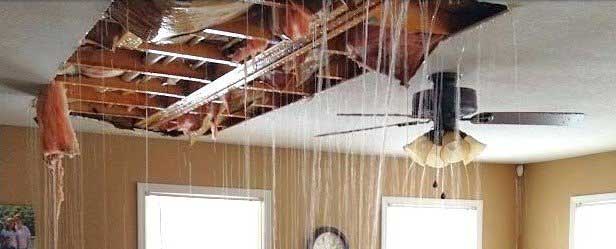Do's & Don'ts of Water Damages.
Do's & Don'ts of Water Damages.
Blog Article
What're your concepts about 5 Home Safety Tips To Reduce The Risk Of Fire And Water Damage?

Water provides life, water breach on components where it's not intended to be can result in damage. It can peel away surface areas and also wear down the foundation if the water soaks right into your framework. Mold and mildew also prosper in a wet environment, which can be harmful for your wellness. Homes with water damages smell stuffy as well as old.
Water can originate from several sources such as tropical storms, floodings, burst pipelines, leakages, and sewage system problems. In case you experience water damage, it would be excellent to know some safety and security precautions. Right here are a couple of standards on exactly how to deal with water damage.
Do Prioritize Home Insurance Coverage
Water damages from flooding as a result of heavy winds is seasonal. You can likewise experience an unexpected flooding when a malfunctioning pipeline unexpectedly breaks into your home. It would certainly be best to have house insurance policy that covers both acts of God such as all-natural tragedies, as well as emergency situations like damaged plumbing.
Do Not Fail To Remember to Turn Off Utilities
In the event of a calamity, especially if you live in a flood-prone location, it would be suggested to shut off the main electric circuit. This cuts off power to your whole home, avoiding electric shocks when water comes in as it is a conductor. Don't forget to turn off the primary water line shutoff. When floodwaters are high, furnishings will certainly walk around as well as create damage. Having the primary shutoff turned off protects against more damages.
Do Remain Proactive and Heed Weather Condition Informs
Storm floods can be very uncertain. If there is a history of flooding in your neighborhood, stay proactive and prepared. If you live near a river, lake, or creek , pay attention to discharge cautions. Get belongings from the first stage and basement, then put them on the greatest possible degree. Doing so lowers prospective home damages.
Do Not Disregard the Roof
You can avoid rainfall damages if there are no holes and also leakages in your roofing system. This will certainly stop water from flowing down your wall surfaces as well as soaking your ceiling.
Do Pay Attention to Tiny Leaks
A ruptured pipe doesn't take place over night. You may see gurgling paint, peeling off wallpaper, water streaks, water spots, or trickling audios behind the wall surfaces. Have your plumbing fixed before it results in large damage.
Don't Panic in Case of a Ruptured Pipeline
Maintaining your presence of mind is important in a time of situation. Due to the fact that it will stifle you from acting quickly, worrying will only intensify the issue. When it concerns water damage, timing is key. The longer you wait, the even more damages you can anticipate. Hence, if a pipe bursts in your house, quickly shut off your main water shutoff to cut off the source. Then disconnect all electrical outlets in the area or turn off the breaker for that part of the house. Lastly, call a trustworthy water damages reconstruction expert for support.
Water provides life, water breach on components where it's not supposed to be can result in damage. Homes with water damage odor moldy as well as old.
Water damage from flooding dues to hefty winds is seasonal. You might observe bubbling paint, peeling off wallpaper, water touches, water spots, or trickling sounds behind the walls. When it comes to water damages, timing is vital.
Some Do's & Don't When Dealing with a Water Damage
DO:
Make sure the water source has been eliminated. Contact a plumber if needed. Turn off circuit breakers supplying electricity to wet areas and unplug any electronics that are on wet carpet or surfaces Remove small furniture items Remove as much excess water as possible by mopping or blotting; Use WHITE towels to blot wet carpeting Wipe water from wooden furniture after removing anything on it Remove and prop up wet upholstery cushions for even drying (check for any bleeding) Pin up curtains or furniture skirts if needed Place aluminum foil, saucers or wood blocks between furniture legs and wet carpet Turn on air conditioning for maximum drying in winter and open windows in the summer Open any drawers and cabinets affected for complete drying but do not force them open Remove any valuable art objects or paintings to a safe, dry place Open any suitcases or luggage that may have been affected to dry, preferably in sunlight Hang any fur or leather goods to dry at room temperature Punch small holes in sagging ceilings to relieve trapped water (don't forget to place pans beneath!); however, if the ceiling is sagging extremely low, stay out of the room and we'll take care of it DO NOT:
Leave wet fabrics in place; dry them as soon as possible Leave books, magazines or any other colored items on wet carpets or floor Use your household vacuum to remove water Use TV's or other electronics/appliances while standing on wet carpets or floors; especially not on wet concrete floors Turn on ceiling fixtures if the ceiling is wet Turn your heat up, unless instructed otherwise

Do you like more info about Safety Tips To Prevent Fire And Water Damage? Place feedback directly below. We would be delighted to see your insights about this posting. We hope that you come back again soon. Sharing is nice. Helping people is fun. I value reading our article about Fire And Water Damage Prevention.
Report this page